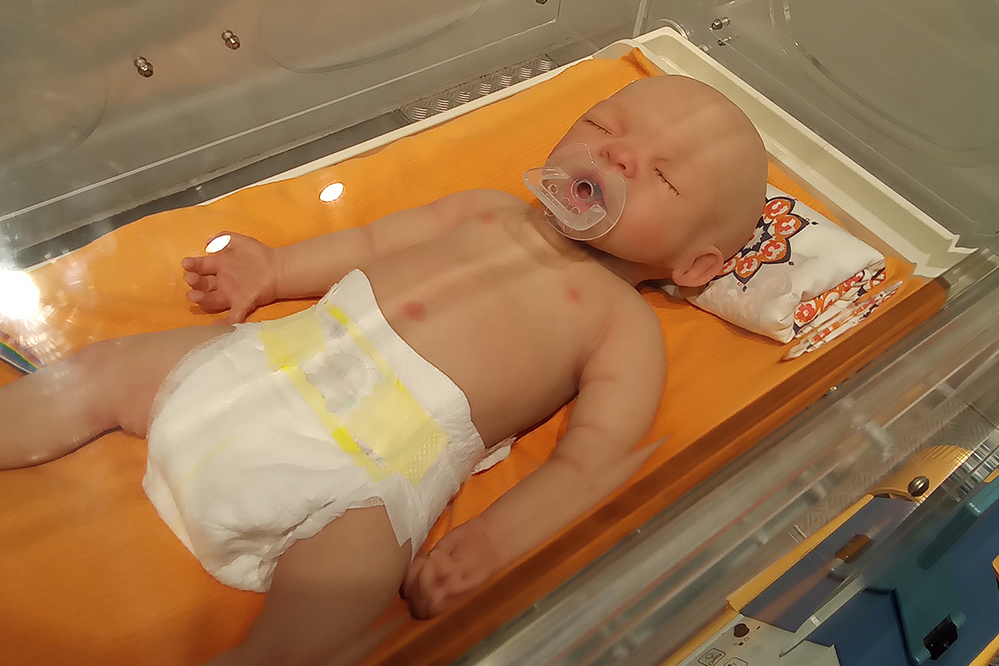The Copernicus Science Centre’s exhibition “The Future is Now” helps to face and understand the challenges of today’s world in all its complexity. “It shows different technological solutions and encourages to look at them in a critical way. It also takes notice of the relationships between our personal values and the values of others.” (CSC website) The exhibition is divided into three parts. Two of them can already be visited: “Digital Brain?” and “Mission: Earth”. The last part (“Human 2.0”) is scheduled to open on 15 October 2024. Part of the “Digital Brain” (“#Relationships”) is BABYCLON, a robotic baby (Photo: Katharina Kühne). According to the organizers, this will allow visitors to test the uncanny valley effect on themselves. “Are we ready to meet our machine lookalikes? Not really. It turns out that the more indistinguishable from humans a robot is, the weirder feelings it evokes. See for yourself if the ‘uncanny valley’ effect works on you.” (CSC website) This is not exactly what the uncanny valley thesis means. It is about very high expectations of very human-like robots, which are then disappointed by, for example, Sophie’s weird smile or BABYCLON’s strange behavior. More information at www.kopernik.org.pl/en/education-and-information-campaigns/exhibition-future-today.
BY OLIVER BENDEL
